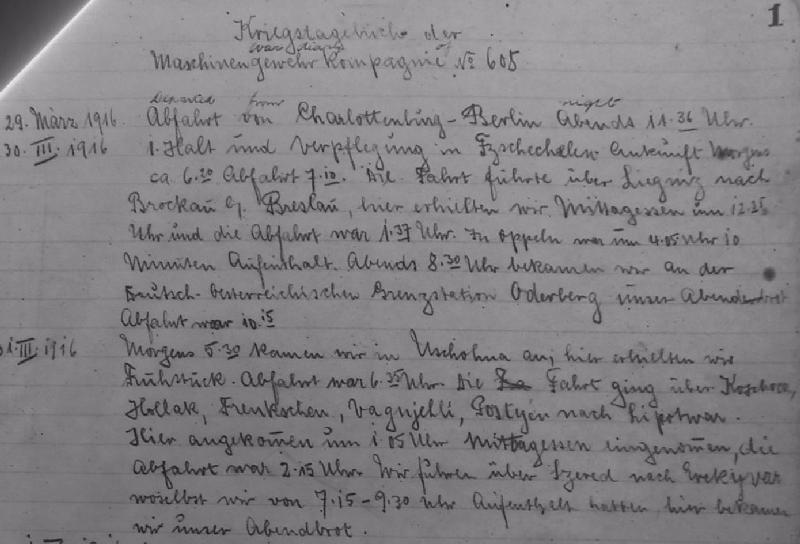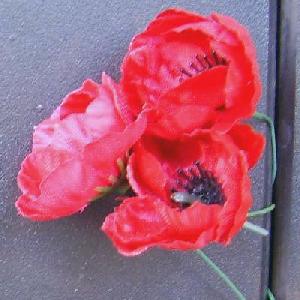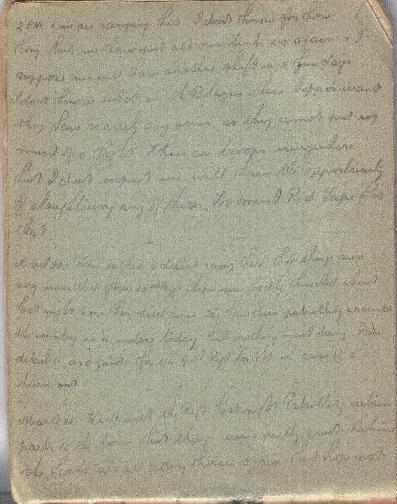The Roll of Honour contains the names of all the men from the Allied Forces known to have given their lives on 30 March 1918 during the Battle of Hébuterne, France, 27 March to 5 April 1918.
Carl Hugo ANDERSON, 33rd Infantry Battalion, 30 March 1918
Thomas ANSON, 34th Infantry Battalion, 30 March 1918
Bertie Stanley ASPERY, 4th Light Trench Mortar Battery, 30 March 1918
Thomas George Alfred BARROW, 44th Infantry Battalion, 30 March 1918
Albert Harris Tasman BENDER, 40th Infantry Battalion, 30 March 1918
Walter Priestley BINNING, 4th Light Trench Mortar Battery, 30 March 1918
Andrew BLACK, 34th Infantry Battalion, 30 March 1918
Adam Robert BLACK, 42nd Infantry Battalion, 30 March 1918
William Charles Lowry BROOKS, 51st Infantry Battalion, 30 March 1918
Wallace BROOM, 4th Light Trench Mortar Battery, 30 March 1918
Leslie Carlisle BROWN, 33rd Infantry Battalion, 30 March 1918
Frank BURROWS, 33rd Infantry Battalion, 30 March 1918
William CAMPBELL, 8th Field Artillery Brigade, 30 March 1918
Royston Stanley CAPEL, 33rd Infantry Battalion, 30 March 1918
Horace CHAMBERLAIN, 40th Infantry Battalion, 30 March 1918
Charles CHAMBERS, 40th Infantry Battalion, 30 March 1918
Thomas William CHILTON, 53rd Infantry Battalion, 30 March 1918
Edward Ligoria COHEN, 8th Field Artillery Brigade, 30 March 1918
Robert Colin CONN, 41st Infantry Battalion, 30 March 1918
Alfred George COOK, 33rd Infantry Battalion, 30 March 1918
Leon Seymour CORBETT, 42nd Infantry Battalion, 30 March 1918
Allan CORMACK, 13th Infantry Battalion, 30 March 1918
George Leslie CUCEL, 51st Infantry Battalion, 30 March 1918
Patrick CURRIE, 4th Light Trench Mortar Battery, 30 March 1918
Harry DALE, 34th Infantry Battalion, 30 March 1918
Edward Charles DAWSON, 33rd Infantry Battalion, 30 March 1918
Leonard Hastings DORNAN, 33rd Infantry Battalion, 30 March 1918
Arthur DUCKWORTH, 6th Field Artillery Brigade, 30 March 1918
Leonard DUNN, 14th Infantry Battalion, 30 March 1918
Vyvian Eric ELLEM, 15th Infantry Battalion, 30 March 1918
Ernest Reuben ERICKSON, 43rd Infantry Battalion, 30 March 1918
Leslie Francis Robert EYRE, 10th Infantry Battalion, 30 March 1918
John Vincent FANNING, 2nd Field Artillery Brigade, 30 March 1918
Frederick Jillett FEALY, 44th Infantry Battalion, 30 March 1918
Howard Stanley FILMER, 33rd Infantry Battalion, 30 March 1918
John FITZGERALD, 8th Field Artillery Brigade, 30 March 1918
Albert Henry FORSTER, 15th Infantry Battalion, 30 March 1918
Albert George FORTESCUE, 33rd Infantry Battalion, 30 March 1918
Thomas Leonard FRY, 44th Infantry Battalion, 30 March 1918
Michael James GRIMES, 33rd Infantry Battalion, 30 March 1918
Joe HALL, 42nd Infantry Battalion, 30 March 1918
Albert Edward HARRISON, 51st Infantry Battalion, 30 March 1918
Harold Unwin HILLYAR, 34th Infantry Battalion, 30 March 1918
Alfred Johannes HOLM, 43rd Infantry Battalion, 30 March 1918
Ralph HOPE, 33rd Infantry Battalion, 30 March 1918
Henry Ernest HOWARD, 44th Infantry Battalion, 30 March 1918
Thomas Walter HYLAND, 33rd Infantry Battalion, 30 March 1918
Robert ISACKSON, 33rd Infantry Battalion, 30 March 1918
William JACK, 42nd Infantry Battalion, 30 March 1918
Percy William JAMES, 33rd Infantry Battalion, 30 March 1918
William Ernest JENETZKY, 48th Infantry Battalion, 30 March 1918
Charles Henry JOHANSEN, 42nd Infantry Battalion, 30 March 1918
Thomas JOHNSTON, 43rd Infantry Battalion, 30 March 1918
Leonard Augustus LAMBSON, 14th Infantry Battalion, 30 March 1918
Reginald William MALLIGAN, 33rd Infantry Battalion, 30 March 1918
John Burley MARSDEN, 33rd Infantry Battalion, 30 March 1918
Frederick Singleton MARTIN, 33rd Infantry Battalion, 30 March 1918
William Philip Oscar MAXWELL, 33rd Infantry Battalion, 30 March 1918
Maurice Ernest MCGRATH, 34th Infantry Battalion, 30 March 1918
James MCINTOSH, 43rd Infantry Battalion, 30 March 1918
Thomas Joseph MCKENNA, 39th Infantry Battalion, 30 March 1918
Theodor MCKENNAREY, 3rd Field Artillery Brigade, 30 March 1918
Cecil Herbert MCKEOWN, 44th Infantry Battalion, 30 March 1918
Charles Dumbar MONTEATH, 51st Infantry Battalion, 30 March 1918
William Daniel MOYES, 42nd Infantry Battalion, 30 March 1918
Kevin Vincent MULLARKEY, 20th Infantry Battalion, 30 March 1918
George MULLER, 42nd Infantry Battalion, 30 March 1918
George Alexander Hugh MURRAY, 14th Infantry Battalion, 30 March 1918
Richard MURRAY, 43rd Infantry Battalion, 30 March 1918
Leslie NICHOLLS, 33rd Infantry Battalion, 30 March 1918
Joshua Thomas NICHOLLS, 44th Infantry Battalion, 30 March 1918
Victor Lawrence William NIELSEN, 39th Infantry Battalion, 30 March 1918
Joseph William OLIVER, 43rd Infantry Battalion, 30 March 1918
Leslie Francis O'SHEA, 33rd Infantry Battalion, 30 March 1918
Ernest Frederick Murray PAMMENT, 43rd Infantry Battalion, 30 March 1918
Reuben PARKES, 34th Infantry Battalion, 30 March 1918
Fred PETTY, 34th Infantry Battalion, 30 March 1918
Charles Starmer PINNEY, 44th Infantry Battalion, 30 March 1918
Ernest William PITTY, 8th Field Artillery Brigade, 30 March 1918
John Graham Antill POCKLEY, 33rd Infantry Battalion, 30 March 1918
Thomas POLLOCK, 14th Infantry Battalion, 30 March 1918
John Thomas Reinsford PRICE, 33rd Infantry Battalion, 30 March 1918
Marshall James PRICE, 44th Infantry Battalion, 30 March 1918
Thomas Easton PROCTER, 45th Infantry Battalion, 30 March 1918
Frederick William RICHARDS, 43rd Infantry Battalion, 30 March 1918
Robert Melville SALTER, 44th Infantry Battalion, 30 March 1918
Edward Andrew SCOTT, 48th Infantry Battalion, 30 March 1918
Hubert Sydney Centennial SIMPSON, 13th Infantry Battalion, 30 March 1918
Wilfred James SIMSHAUSER, 33rd Infantry Battalion, 30 March 1918
Elliott Darcy SLADE, 33rd Infantry Battalion, 30 March 1918
John Willis SMILIE, 14th Infantry Battalion, 30 March 1918
Josiah Needham SMITH, 33rd Infantry Battalion, 30 March 1918
Leslie John SMITH, 3rd Machine Gun Battalion, 30 March 1918
Donald Alexander TEASDALE, 14th Infantry Battalion, 30 March 1918
Horace William THOMPSON, 1st Pioneer Battalion, 30 March 1918
William TISDALL, 19th Infantry Battalion, 30 March 1918
John Thomas TRIM, 8th Field Artillery Brigade, 30 March 1918
Frederick Martin TURNER, 3rd Machine Gun Battalion, 30 March 1918
Hector William WADE, 44th Infantry Battalion, 30 March 1918
Frederick William WALDRON, 41st Infantry Battalion, 30 March 1918
Thomas WALKER, 7th Field Artillery Brigade, 30 March 1918
James WELLS, 40th Infantry Battalion, 30 March 1918
Alpheus Eric WENBAN, 33rd Infantry Battalion, 30 March 1918
Alston Lyle WHEELDON, 42nd Infantry Battalion, 30 March 1918
Neville Dacre WILKINSON, 33rd Infantry Battalion, 30 March 1918
Arthur William WOOD, 4th Light Trench Mortar Battery, 30 March 1918
Hector Francis YOUNGSON, 33rd Infantry Battalion, 30 March 1918
Lest We Forget







